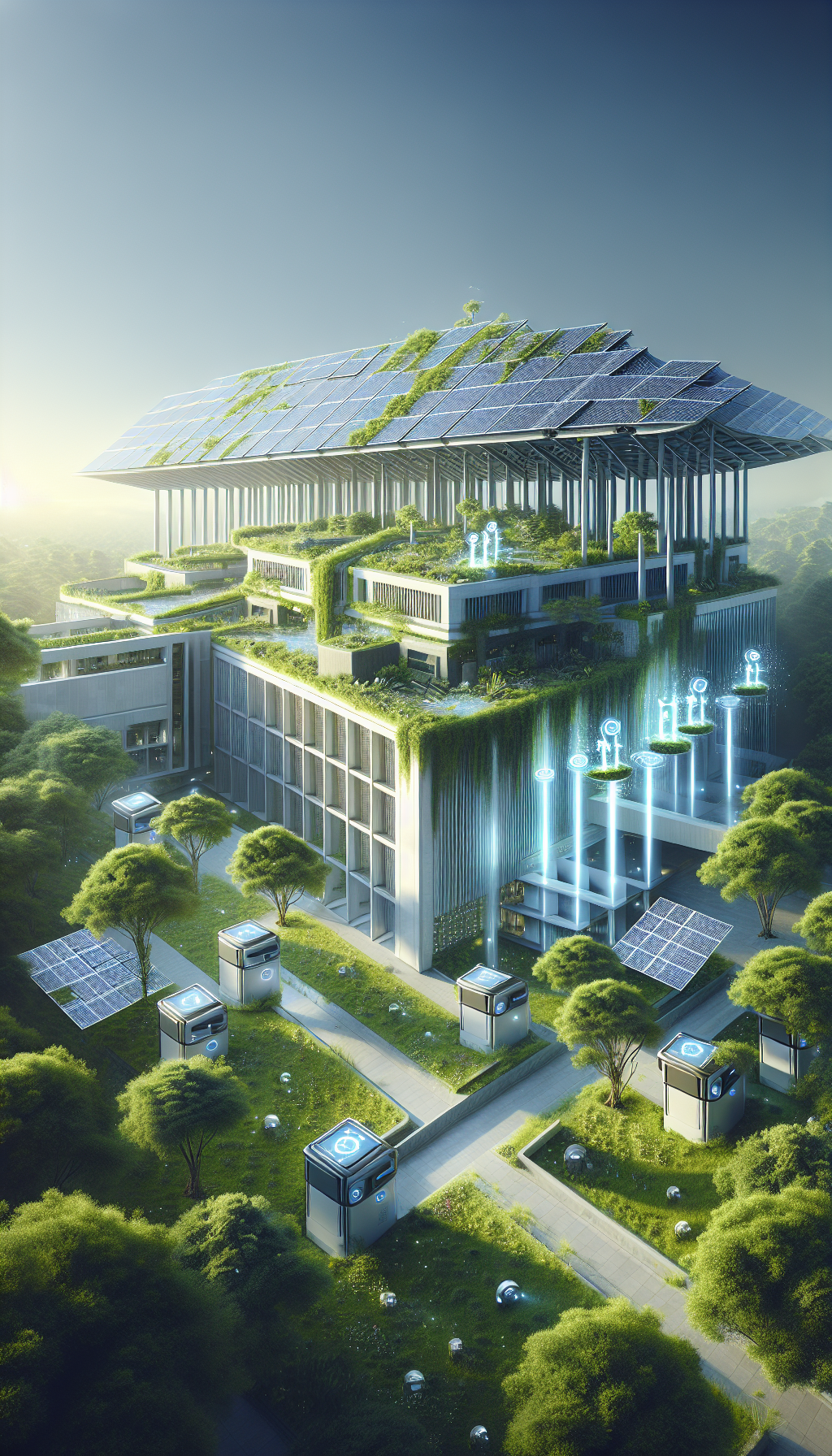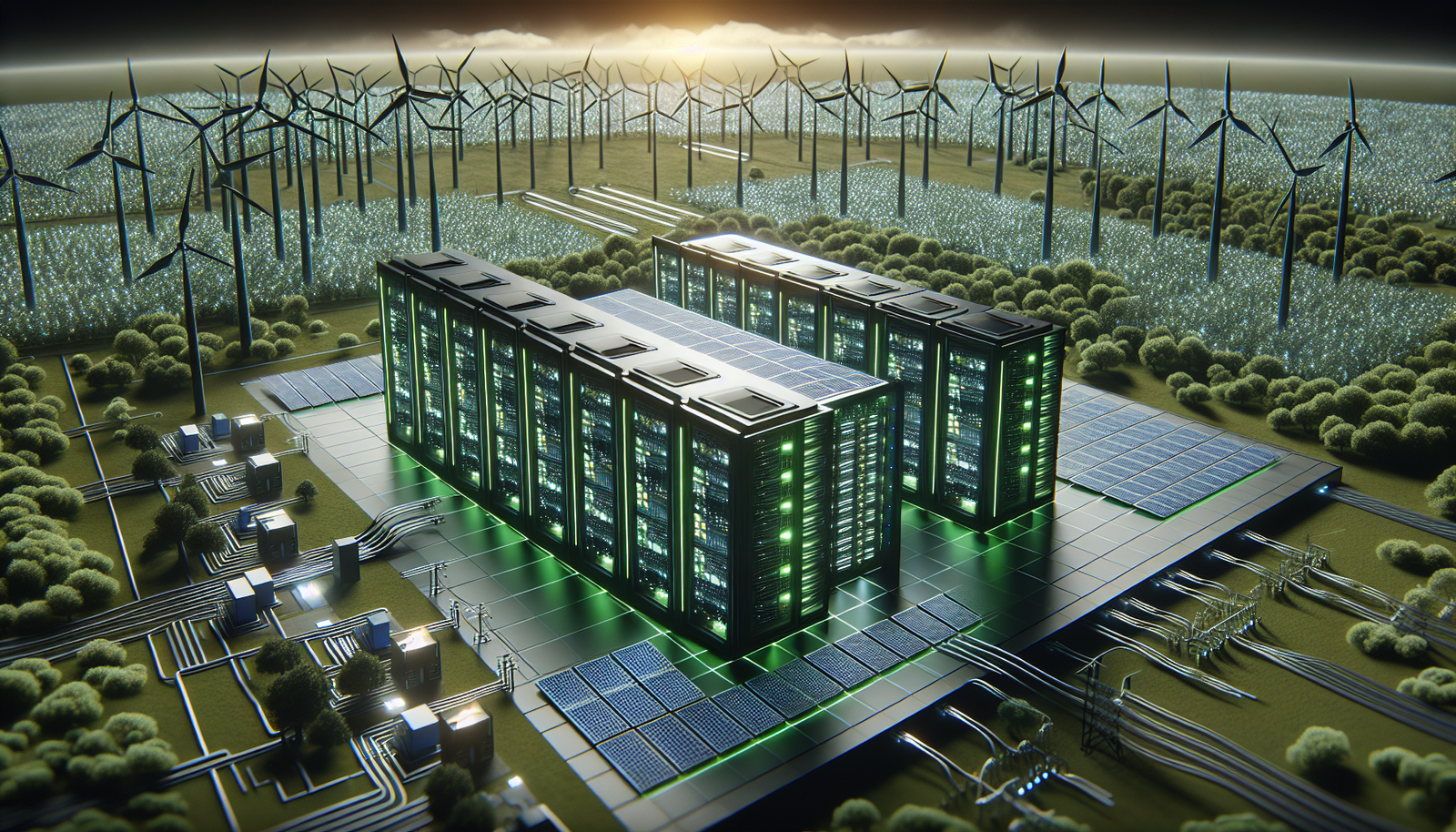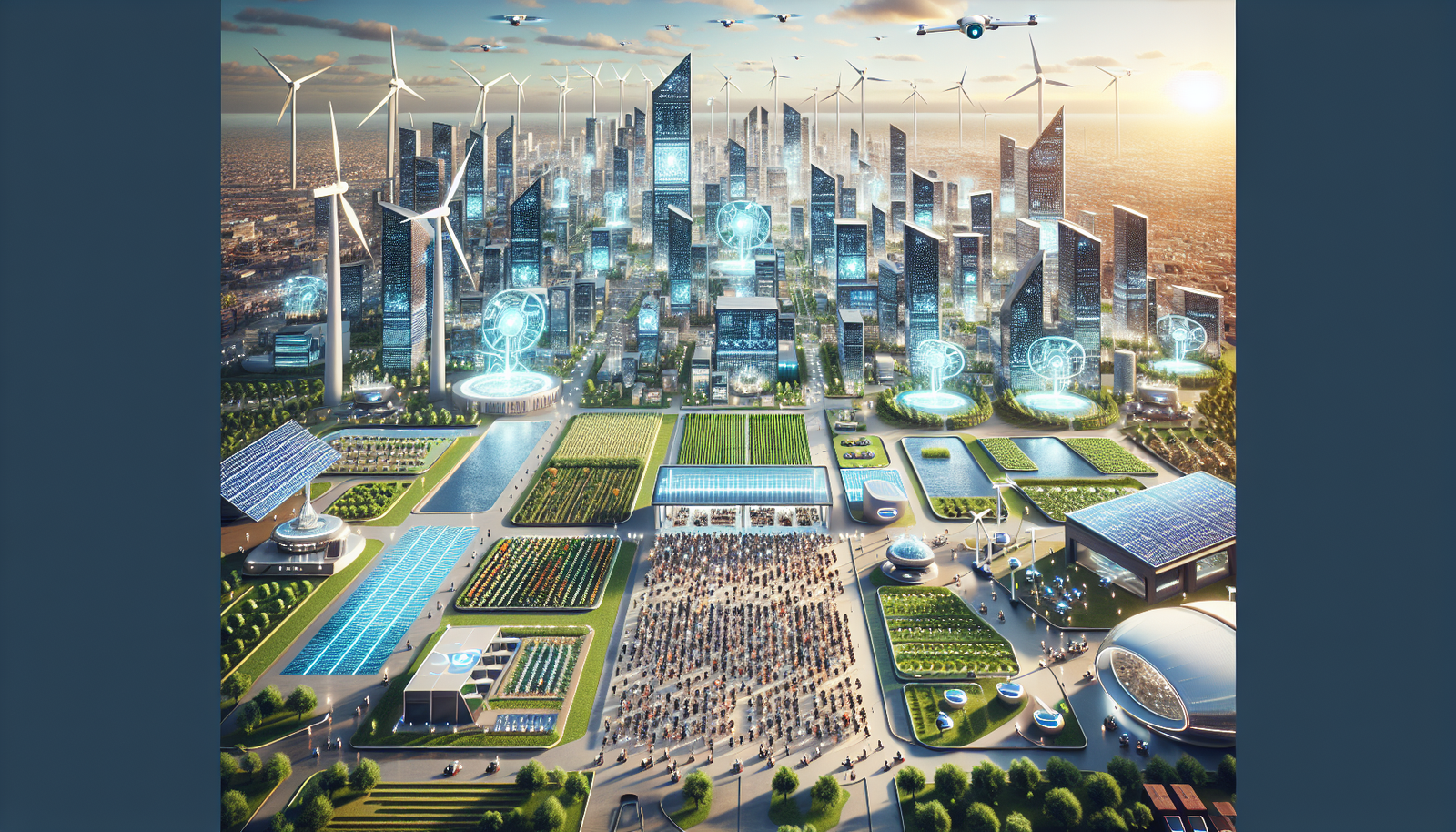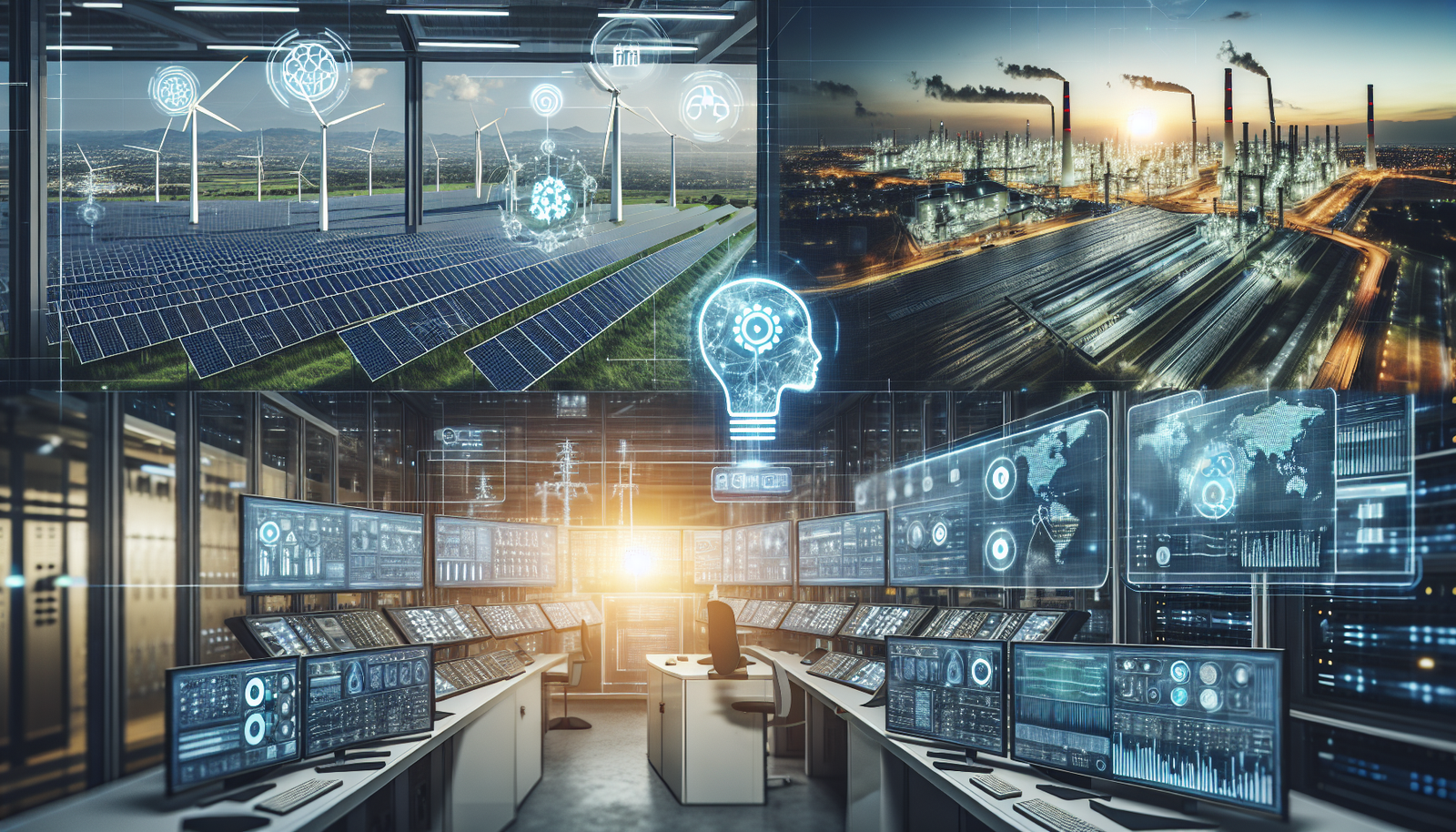AI in Building Maintenance: An Overview
Artificial Intelligence (AI) is becoming a pivotal force in transforming building maintenance, offering innovative solutions that enhance operational efficiency and sustainability. The integration of AI in building maintenance processes is driven by the need to reduce energy consumption, minimize waste, and ensure the longevity of building systems. AI technologies are being leveraged to streamline operations, predict maintenance needs, and optimize resource use.
Energy management is one of the primary areas where AI is making a significant impact. By utilizing AI algorithms, building management systems can analyze energy consumption patterns and identify inefficiencies. This data-driven approach allows for the implementation of targeted measures to reduce energy waste. For instance, AI can automatically adjust heating, ventilation, and air conditioning (HVAC) systems based on occupancy patterns and weather forecasts, ensuring optimal energy usage.
Predictive maintenance is another critical application of AI in building operations. Traditional maintenance methods often rely on scheduled checks and reactive repairs, which can be costly and inefficient. AI, however, enables predictive maintenance by analyzing data from sensors embedded in building systems. This approach allows for early detection of potential issues, minimizing downtime and reducing repair costs. A study has shown that predictive maintenance can reduce maintenance costs by up to 30% and decrease equipment downtime by up to 45%.
In addition to energy management and predictive maintenance, AI is also revolutionizing waste management systems within buildings. Intelligent waste sorting systems use AI to automatically identify and separate recyclable materials from general waste, significantly reducing landfill contributions. Moreover, AI-driven analytics can optimize waste collection routes and schedules, further decreasing the carbon footprint of building operations.
Sustainable Energy Management
Sustainable energy management is at the forefront of transforming how buildings consume and conserve energy. By leveraging AI technologies, building managers can optimize energy usage, reduce waste, and enhance efficiency. AI systems analyze vast amounts of data from building sensors to determine patterns and identify opportunities for energy savings. These insights lead to actionable strategies that significantly decrease energy consumption, consequently reducing the carbon footprint and operational costs.
One of the primary components of AI-driven sustainable energy management is the real-time monitoring of energy consumption. AI platforms use data analytics to provide a comprehensive view of how energy is being utilized across various systems within the building. This allows for the identification of inefficiencies and the implementation of adjustments in real-time. For example, AI can adjust lighting and HVAC systems based on occupancy patterns, weather forecasts, and time of day, ensuring that energy is used only when necessary.
Moreover, predictive analytics plays a crucial role in sustainable energy management. By analyzing historical data, AI can predict future energy demands and optimize energy procurement strategies. This is especially beneficial for integrating renewable energy sources such as solar and wind. AI algorithms can forecast the availability of renewable energy and align building operations to use this clean energy effectively, thereby minimizing reliance on non-renewable sources. The following table illustrates the impact of AI on energy savings in buildings:
| Energy Management Aspect | Traditional Approach | AI-Enhanced Approach | Energy Savings (%) |
|---|---|---|---|
| Lighting | Scheduled Timers | Occupancy Sensors & AI | 30% |
| HVAC Systems | Manual Controls | Predictive Maintenance & AI | 25% |
| Renewable Integration | Fixed Allocation | AI Forecasting | 15% |
As buildings continue to adopt AI-powered solutions, the landscape of sustainable energy management will evolve, offering even more innovative ways to conserve energy and promote environmental stewardship. In summary, AI not only enables significant energy savings but also supports the transition to a more sustainable future.
Predictive Maintenance for Longevity
Predictive maintenance is a groundbreaking approach that leverages AI technologies to extend the lifespan of building systems and equipment. By utilizing advanced data analytics, AI can predict when a piece of equipment is likely to fail, allowing for maintenance to be performed just in time. This not only helps in avoiding unexpected breakdowns but also optimizes the performance and efficiency of the equipment over time.
One of the primary benefits of predictive maintenance is its ability to reduce maintenance costs. Traditional maintenance strategies, such as reactive or scheduled maintenance, often lead to unnecessary expenditures. In contrast, predictive maintenance focuses on condition-based monitoring, which means that maintenance is only performed when necessary. This method can lead to substantial cost savings.
- Improved equipment reliability and availability
- Reduction in maintenance costs by up to 30%
- Decrease in downtime by approximately 45%
To illustrate the effectiveness of predictive maintenance, the following table outlines a comparison between traditional and AI-powered maintenance strategies:
| Maintenance Strategy | Cost Efficiency | Downtime Reduction |
|---|---|---|
| Reactive Maintenance | Low | Minimal |
| Scheduled Maintenance | Moderate | Moderate |
| Predictive Maintenance | High | Significant |
Moreover, predictive maintenance contributes to sustainability by optimizing resource use and minimizing waste. The AI systems collect and analyze data from various sensors installed in the building, enabling a holistic view of the building’s operational status. This data-driven approach ensures that maintenance activities are aligned with the actual needs of the building, thus promoting environmental sustainability.
Smart Waste Management Systems
Smart waste management systems are revolutionizing the way buildings handle waste, significantly contributing to sustainability efforts. These systems leverage AI technologies to optimize waste collection, segregation, and recycling processes. By employing sensors and data analytics, buildings can monitor waste levels in real-time, ensuring timely collection and reducing overflow incidents. This not only enhances operational efficiency but also minimizes the environmental impact of waste management.
The integration of AI in waste management allows for the development of intelligent sorting systems. These systems utilize machine learning algorithms to accurately identify and separate different types of waste materials, such as plastics, metals, and organics, at a much faster rate than traditional methods. This precision reduces contamination in recycling streams, increasing the overall effectiveness of recycling programs. The following table illustrates the impact of AI-driven waste management on recycling efficiency:
| Type of Waste | Traditional Sorting Efficiency (%) | AI-Enhanced Sorting Efficiency (%) |
|---|---|---|
| Plastics | 70 | 90 |
| Metals | 75 | 92 |
| Organics | 65 | 85 |
Moreover, AI-powered waste management systems can predict future waste generation patterns using historical data and machine learning models. This predictive capability enables facility managers to make more informed decisions regarding waste management strategies, such as adjusting collection schedules or implementing targeted waste reduction initiatives. The benefits of such predictive analytics include reduced operational costs and a significant decrease in the carbon footprint associated with waste transportation.
In addition, the adoption of smart waste management systems supports circular economy principles by promoting the reuse and recycling of materials. By improving waste handling processes, buildings can contribute to a more sustainable resource cycle, ultimately reducing the demand for raw materials and minimizing landfill usage. The future of sustainable building operations lies in the widespread adoption of these intelligent systems, paving the way for greener and more efficient urban environments.
Indoor Environmental Quality Monitoring
Indoor Environmental Quality (IEQ) Monitoring is a critical component of sustainable building maintenance. It involves assessing various factors such as air quality, lighting, thermal comfort, and acoustics to ensure a healthy and productive environment for occupants. Artificial Intelligence (AI) plays a pivotal role in enhancing IEQ by analyzing large datasets collected from sensors installed throughout the building. These sensors continuously monitor parameters like temperature, humidity, CO2 levels, and particulate matter, providing real-time insights and enabling proactive adjustments.
AI systems can process data from IEQ sensors to detect patterns and anomalies that might indicate deteriorating air quality or inadequate ventilation. For instance, if CO2 levels consistently rise during certain hours, AI can suggest increasing ventilation during those periods. This not only improves occupant comfort but also optimizes energy use, as adjustments are made precisely when needed.
Moreover, AI-driven IEQ monitoring can contribute to predictive maintenance strategies. By analyzing trends in environmental data, AI can forecast potential equipment failures or inefficiencies, allowing facility managers to address issues before they escalate. This proactive approach minimizes downtime and extends the lifespan of equipment, aligning with sustainability goals.
Below is a simple representation of how AI integrates with various IEQ components:
| IEQ Component | Monitored Parameter | AI Functionality |
|---|---|---|
| Air Quality | CO2, VOCs, Particulate Matter | Detect patterns, suggest ventilation adjustments |
| Thermal Comfort | Temperature, Humidity | Optimize heating/cooling systems |
| Lighting | Light Intensity | Adjust lighting based on occupancy and daylight |
| Acoustics | Noise Levels | Identify noise pollution sources |
By integrating AI with IEQ monitoring systems, buildings can achieve a higher standard of sustainability and occupant satisfaction. The data-driven approach ensures that environmental conditions are not only meeting regulatory standards but are also optimized for the well-being of those using the space.
Water Conservation Techniques
Water conservation in building maintenance has become increasingly crucial as global water resources face unprecedented pressure. AI-powered systems are at the forefront of this transformation, enabling more efficient and effective water management strategies. These systems utilize a combination of smart sensors, machine learning algorithms, and advanced analytics to monitor water usage in real time, identify leaks, and suggest optimal conservation measures. By analyzing data patterns, AI can predict peak usage times and adjust water supply accordingly, ensuring minimal waste.
One of the most effective AI applications in water conservation is leak detection and management. Traditional methods often fail to detect leaks until significant damage has occurred, but AI systems can identify even the smallest leaks by continuously analyzing data from sensors placed throughout the plumbing system. This proactive approach not only prevents water loss but also reduces maintenance costs and extends the lifespan of infrastructure. For instance, an AI-based leak detection system implemented in a commercial building resulted in a 20% reduction in water usage within the first year.
Additionally, AI technologies facilitate the optimization of irrigation systems in landscapes surrounding buildings. By integrating weather forecasts and soil moisture data, AI systems can automate irrigation schedules to ensure that plants receive the right amount of water at the right time. This precision in water delivery minimizes waste and promotes healthier plant growth. In urban settings, these intelligent irrigation systems have demonstrated a 30% improvement in water efficiency compared to traditional methods.
The integration of AI in water conservation is further supported by data visualization tools that provide building managers with clear insights into water usage trends and conservation opportunities. The following table exemplifies how AI-driven insights can lead to significant savings:
| Feature | Traditional Method | AI-Enhanced Method | Water Savings |
|---|---|---|---|
| Leak Detection | Manual inspection | Real-time sensor monitoring | 20% reduction |
| Irrigation Management | Fixed schedule | Dynamic schedule based on AI predictions | 30% improvement |
AI-Driven Security Enhancements
AI-driven security enhancements are becoming a cornerstone in the realm of sustainable building maintenance. As buildings become smarter, the integration of AI technologies in security systems not only enhances safety but also contributes to overall sustainability goals. AI algorithms enable security systems to learn and adapt to new threats, providing a dynamic and responsive approach to building security. This adaptability reduces the need for constant human monitoring, thereby conserving energy and resources.
One significant aspect of AI-enhanced security is its ability to analyze vast amounts of data in real-time. AI systems can process data from numerous sensors and cameras throughout a building to detect unusual patterns or behaviors. This capability allows for the early identification of potential security threats, such as unauthorized access or suspicious activities. The following table illustrates the key benefits of AI-driven security enhancements:
| Benefit | Description |
|---|---|
| Real-time Monitoring | Continuous surveillance and instant threat detection. |
| Resource Efficiency | Reduces the need for large security teams, saving energy and resources. |
| Predictive Analysis | Anticipates potential threats by analyzing patterns and trends. |
AI-driven systems also offer predictive capabilities, which play a crucial role in preventing incidents before they occur. By leveraging historical data and machine learning algorithms, AI can forecast potential security breaches and recommend proactive measures. This predictive approach not only enhances safety but also ensures that maintenance resources are utilized efficiently, aligning with sustainability objectives.
Moreover, AI enhances the integration of security systems with other building management systems. This interconnectedness allows for a holistic approach to building operations, where security measures can be aligned with energy management and other sustainability initiatives. For instance, AI can adjust lighting and HVAC systems in response to security events, optimizing energy use while maintaining safety. The following list highlights some integrated AI-driven security features:
- Smart access controls with facial recognition.
- Automated emergency response coordination.
- Integration with energy management systems for efficient resource use.
Cost Efficiency and ROI
Integrating AI technologies into building maintenance and operations can significantly enhance cost efficiency and provide a substantial return on investment (ROI). By optimizing energy consumption, predictive maintenance, and resource management, AI-driven systems enable building managers to reduce operational costs. For instance, AI algorithms can analyze energy usage patterns and automatically adjust heating, ventilation, and air conditioning (HVAC) systems to minimize energy waste.
Predictive Maintenance: AI empowers building maintenance teams with predictive capabilities, allowing them to anticipate equipment failures before they occur. This proactive approach decreases downtime and extends the lifespan of building systems. According to recent studies, predictive maintenance can reduce maintenance costs by up to 30% and decrease equipment downtime by 45%. This not only reduces repair costs but also enhances the overall efficiency of building operations.
Energy Management: AI systems can also optimize energy consumption by learning from historical data and current building occupancy levels. This leads to an average energy savings of 15-20%, translating into significant cost reductions over time. Implementing AI-driven energy management systems can result in a faster ROI, often within just a few years, as operational savings quickly offset the initial investment costs.
Furthermore, AI-powered waste management systems efficiently handle waste processing, leading to reduced disposal costs. By analyzing waste generation patterns, AI can suggest optimal waste collection schedules and recycling strategies, further contributing to cost savings and environmental sustainability. Overall, the integration of AI in building maintenance not only supports sustainable practices but also offers a compelling financial incentive for building owners and operators.
Adapting to Climate Change
Adapting to climate change has become a critical focus for building maintenance strategies, as extreme weather events and shifting climate patterns pose increasing challenges. AI technologies offer promising solutions to address these issues effectively. By leveraging advanced data analytics, AI systems can predict climate-related impacts on buildings, enabling proactive measures to mitigate risks and enhance resilience.
One of the key areas where AI contributes significantly is in energy management. As temperatures fluctuate and weather patterns become more unpredictable, maintaining optimal indoor climates efficiently becomes crucial. AI-driven systems can dynamically adjust heating, ventilation, and air conditioning (HVAC) operations based on real-time weather data, occupancy patterns, and energy grids. This not only ensures comfort but also reduces energy consumption, aligning with sustainability goals.
Additionally, AI plays a pivotal role in predictive maintenance by analyzing data from various building sensors to foresee potential failures or inefficiencies before they occur. This capability is particularly valuable in regions prone to climate-induced disruptions such as hurricanes or heavy snowfall. For instance, AI can predict the stress levels on structural components during severe weather, prompting timely inspections and reinforcements. This not only prevents costly repairs but also enhances the safety and longevity of the building infrastructure.
| Climate Challenge | AI Solution | Benefit |
|---|---|---|
| Extreme Temperatures | AI-Optimized HVAC Systems | Reduced Energy Use |
| Severe Weather Events | Predictive Maintenance | Increased Resilience |
| Water Management | AI-Based Leak Detection | Conservation of Resources |
Regulatory Compliance and Reporting
The integration of AI technologies in building maintenance not only enhances operational efficiency but also significantly aids in regulatory compliance and reporting. AI systems streamline the process of adhering to various environmental and safety standards by automatically monitoring and analyzing data from building operations. These systems can detect anomalies and provide alerts, ensuring that buildings remain compliant with regulations at all times. This proactive approach reduces the risk of non-compliance and the potential for associated fines and penalties.
One of the key benefits of AI in regulatory compliance is its ability to generate comprehensive and accurate reports. Traditional reporting methods can be time-consuming and prone to human error. However, AI technologies can automate the collection and analysis of data, producing detailed reports that meet the stringent requirements of regulatory bodies. These reports can include information on energy consumption, emissions, and waste management, all of which are critical for demonstrating compliance with sustainability standards.
The following table illustrates how AI impacts various aspects of regulatory compliance:
| Aspect | Traditional Method | AI-Enhanced Method |
|---|---|---|
| Data Collection | Manual, labor-intensive | Automated, real-time |
| Data Analysis | Post-event, reactive | Continuous, proactive |
| Reporting | Periodic, error-prone | Instant, accurate |
Moreover, AI’s role in regulatory compliance is set to expand with the development of more sophisticated algorithms and data analytics tools. Future trends indicate a shift towards more dynamic and adaptable regulatory frameworks, where AI systems can continuously learn and update compliance protocols based on evolving regulations. This adaptability ensures that building operations can swiftly align with new compliance requirements, minimizing disruption and maintaining sustainability goals.
Challenges and Solutions
The integration of AI technologies into sustainable building maintenance and operations is not without its challenges. One significant challenge is the high cost of implementation. Many building management systems require substantial upfront investments to integrate AI-driven solutions, which can be a barrier for small to medium-sized enterprises. Furthermore, the complexity of these technologies necessitates skilled personnel for effective management and operation, adding to the overall expense.
Another challenge is the interoperability of AI systems with existing building infrastructure. Many buildings, especially older ones, have legacy systems that may not be compatible with new AI technologies. This creates a need for customized solutions, which can be both time-consuming and costly. Additionally, there are concerns about data privacy and security, as AI systems often rely on vast amounts of data to function effectively.
Despite these challenges, there are viable solutions that can facilitate the adoption of AI in building maintenance. To address cost issues, companies can explore phased implementation strategies, starting with the most critical systems, such as energy management, before expanding to other areas. Governments and industry bodies can also play a role by offering incentives and subsidies to encourage businesses to adopt sustainable AI solutions.
To overcome interoperability issues, establishing industry-wide standards for AI integration can ensure that new technologies are compatible with existing systems. This can be supported by partnerships between technology providers and building managers to develop tailored solutions that address specific infrastructure needs. Regarding data privacy and security, implementing robust encryption and data protection protocols can help safeguard sensitive information, ensuring that AI systems are both effective and secure.
Future Trends in AI for Sustainability
The future of AI in sustainable building maintenance is poised to bring substantial advancements, integrating cutting-edge technologies to enhance efficiency and environmental responsibility. Artificial Intelligence is expected to delve deeper into predictive analytics, allowing for even more precise forecasting of maintenance needs and resource allocation. This will not only reduce costs but also minimize energy consumption, aligning with global sustainability goals.
One significant trend is the integration of AI with Internet of Things (IoT) devices, creating a robust network of interconnected systems that can communicate and optimize building operations autonomously. This collaboration promises to enhance real-time monitoring and adjustments, ensuring that energy usage is continuously optimized. A table illustrating the potential energy savings through AI-IoT integration may look as follows:
| Year | Energy Savings (%) |
|---|---|
| 2025 | 15% |
| 2030 | 25% |
| 2040 | 35% |
Moreover, AI-driven machine learning algorithms are anticipated to evolve, becoming more adept at learning from obscure data patterns, thereby enhancing the accuracy of sustainability initiatives. These algorithms will be vital in managing complex systems such as waste management, where they can predict optimal waste processing times and methods. Future trends may also include a stronger emphasis on AI’s role in renewable energy management, where AI systems predict energy generation patterns from solar and wind sources, thereby optimizing consumption strategies.
Looking ahead, there is a growing interest in developing AI-powered virtual assistants for building managers, providing real-time data insights and strategic recommendations to improve sustainability metrics. These assistants could potentially guide decision-making processes through intuitive dashboards and alerts. An ordered list of expected features for these virtual assistants includes:
- Real-time energy consumption monitoring
- Predictive maintenance scheduling
- Automated waste management alerts
- Sustainability compliance tracking
In conclusion, the integration of AI in building maintenance and operations is expected to profoundly reshape the landscape of sustainability. As the technology continues to evolve, its applications will likely become more sophisticated, driving significant improvements in resource efficiency and environmental stewardship.
Case Studies of Successful Implementations
The integration of AI technologies in building maintenance has led to remarkable improvements in sustainability across various sectors. One notable case study involves a leading tech company that implemented AI-powered energy management systems in its headquarters. By utilizing advanced algorithms, the system was able to optimize heating, ventilation, and air conditioning (HVAC) operations. As a result, the company reported a 25% reduction in energy consumption within the first year, significantly cutting down on its carbon footprint.
Another successful implementation is observed in a major healthcare facility that adopted predictive maintenance strategies using AI. The facility deployed AI sensors throughout its infrastructure to monitor equipment health and predict potential failures. This approach not only enhanced the reliability of the medical equipment but also reduced maintenance costs by 30%. The hospital reported improved service delivery and patient satisfaction due to fewer interruptions caused by equipment breakdowns.
In the realm of waste management, a prominent retail chain utilized AI to streamline its waste sorting process. The chain implemented AI-driven robots to identify and separate recyclable materials, achieving a 40% increase in recycling efficiency. This innovation not only minimized landfill waste but also generated additional revenue from recycled materials, demonstrating the economic benefits of AI in sustainable operations.
The table below summarizes key outcomes from these case studies:
| Sector | AI Application | Outcome |
|---|---|---|
| Technology | Energy Management | 25% Reduction in Energy Consumption |
| Healthcare | Predictive Maintenance | 30% Reduction in Maintenance Costs |
| Retail | Waste Management | 40% Increase in Recycling Efficiency |



